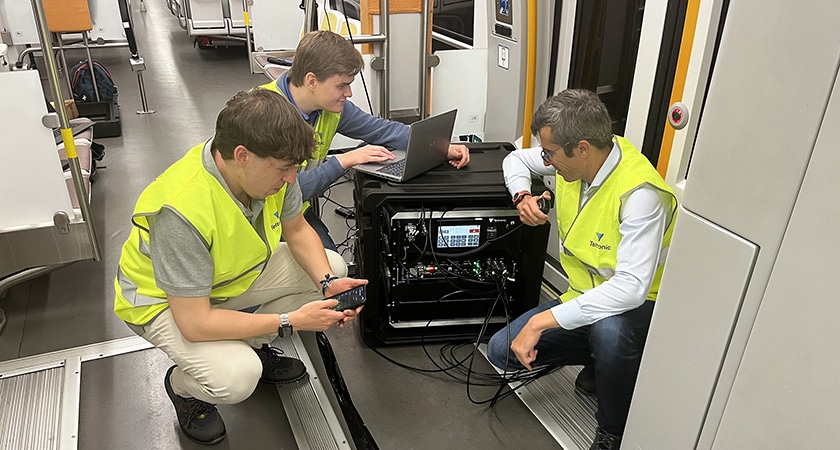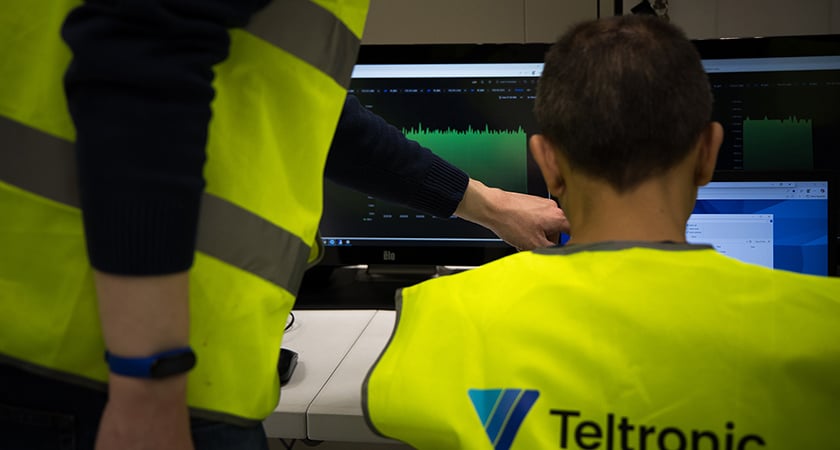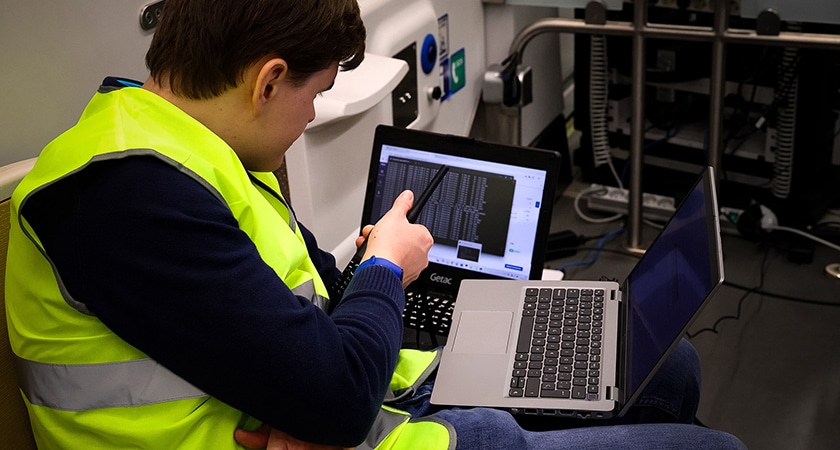
Durango, a beautiful town in the Basque Country, was set to become the epicenter of European railway innovation during the nights of the first week of June. While the city slept, the tracks running through the town were being prepared for something extraordinary: a series of tests that could redefine the future of critical communications in transportation.
After three years of work, thousands of hours of research, and intense collaboration to design the system—and following lab testing of the solution—the companies forming the MoySEST consortium, led by Teltronic and including Kenmei, Nemergent, and S2 Grupo as partners, came together to test the results of their efforts under real-world conditions.
The MoySEST project, supported by the European Union and part of the Recovery, Transformation and Resilience Plan, is included in the ÚNICO 5G Sectorial program. It represents a firm commitment to bringing next-generation connectivity to transport corridors, creating a new paradigm that drives the digitalization of railways through broadband networks. With the FRMCS (Future Railway Mobile Communication System) always on the horizon, 5G, MCX technology, and cybersecurity were set to play a decisive role.

Thanks to the essential support of ETS (Euskal Trenbide Sarea) and Euskotren, one of the trains on Euskotren’s Line 1 became a mobile laboratory. Onboard, technical teams worked to verify that the new 5G system provides a viable solution for train-to-ground communications, meeting the strict requirements of the railway environment.
And it did.
For several nights, a test train—running outside of commercial hours, without passengers—traveled along a specially prepared section of track where a private 5G network had been installed in the preceding weeks. Onboard systems transmitted large volumes of data and real-time video to the operations center set up at the Lebario depot, where the progress of the tests was monitored.

The metrics obtained—coverage, latency, stability, and security—confirmed that the FRMCS ecosystem, based on MCX (Mission Critical Services) technology and 5G networks, could operate reliably. Cybersecurity probes were constantly active: every induced anomaly at various system access levels was detected, logged, and countered.
But this story isn’t over yet. The final phase of the MoySEST project has only just begun. Now, with thousands of data points collected during those nights, the challenge returns to the lab: to analyze, refine, and transform that information into knowledge. These analyses will allow validation—with evidence in hand—that the future of railway communications is on track to becoming a standard.
Durango was likely the first step in a transformation. The test train covered many kilometers, with a clear destination: a safer, more connected, more efficient transport system, ready to meet the challenges of the near future.



